Lange Rx 130 120 Ski Boots 2015 Review
Kicking: 2021-2022 Lange RX 130 LV
Stated Flex: 130
Available sizes: 24-30.5
Stated Final: 97 mm
Size Tested: 27.five
Stated BSL (size 27.5): 315 mm
Buckles: Alu Race, WC Profil Screwed Shell ii Like shooting fish in a barrel Open
Powerstrap: l mm Velcro
Shell Textile:
- Gage: Polyether Dual Core
- Shoe / Clog: Polyether Dual Core
Soles: Standard Alpine (ISO 5355)
Binding Compatibility: Standard Alpine, Grip Walk, WTR, and MNC Bindings
MSRP: $699
Exam Locations: Chugach Powder Guides, Kenai Mountains, & Alyeska Resort, AK; Mt Bachelor, OR
Days Tested: 100+
[Note: Our review was conducted on the 17/eighteen RX 130 LV, which returns unchanged for 18/19, 19/twenty, 20/21, or 21/22, apart from graphics.]

Review Navigation: Specs // Intro // Design & Features // Fit // Functioning // Bottom Line
Intro
The RX 130 has been in the Lange lineup for years now, but starting with the 17/eighteen version of the kick, Lange incorporated their "Dual Cadre" construction across the RX line. This new structure is designed to offering better overall performance and make the boots easier to get on and off. I've now spent two seasons in the electric current RX 130 LV, and it's become my go-to alpine kicking. Hither'southward why:

Beat construction and a note on dissimilar plastics
Both the cuff and lower crush of the RX 130 are made of what Lange calls "Polyether Dual Core". What is Dual Core? This is what Lange has to say virtually it: "Utilizing our revolutionary new injection method, both soft and rigid versions of the nearly responsive high-performance plastics (polyether, polyurethane, grilamid®) are simultaneously injected into the kick mold and targeted to key areas of the boot."
The basic concept is that harder plastic is used in the areas that need to transmit power and free energy while softer plastic is used in areas that wrap the foot and lower leg and need to exist more pliable for comfort, fit, and flex. Lange besides claims that this process creates a sandwich of softer plastic inside outer layers of stiffer plastic that enhances elastic tension and actively compresses and expands within the sandwich of the shell material. In theory, this creates more tension and more rebound when the kicking is flexed.
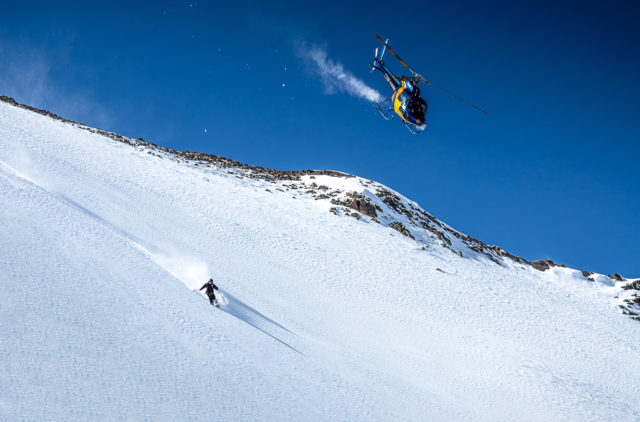
In the instance of RX 130, Lange utilizes Dual Core Polyether in both the gage and lower beat out, which I think is a good idea. Because Lange oft makes the same trounce shape out of different materials (across their different models and over the years), I've had the opportunity to ski what is essentially the aforementioned boot (in beat-shape and fit) in several dissimilar plastics including Polyether, Polyolefin, Polyurethane, and Grilamid.
I'll go into the flex characteristics and performance of the current RX 130 below, but I will say with confidence that, from the perspective of pure downhill ski performance, my favorite Lange boots have always been those with both a Polyether cuff and Polyether lower trounce. I've institute that the full Polyether boots provide the most progressive flex, best rebound, and best overall control compared to the aforementioned shells that use other plastics. The only downside I've found with Polyether-shell alpine boots is that they practise seem a scrap more temperature sensitive than some other plastics, peculiarly in comparison to Grilamid, which seems to stay pretty constant beyond the temps.
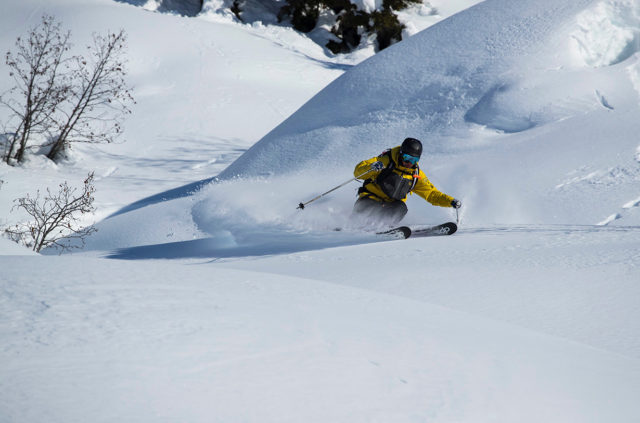
It'due south worth noting that, Lange has typically made their 120 and stiffer RS series (Race / Piste) boots with a Polyether cuff and lower vanquish (as they yet exercise), but various iterations of the RX boots take featured a combination of Polyether and Polyurethane (east.one thousand., the 2013 RX 130 with translucent dark-green lower and white cuff). Interestingly, Tecnica makes their unabridged line of 18/19 Firebird WC racing boots out of Polyether (all the way down to the WC 90), but the Mach1 130 LV is the only boot in the Mach1 serial with a total Polyether cuff and lower crush.
Lange switches to Polyurethane lowers in the RX 120 and full Polyurethane in the softer RX's. Other companies vary in like ways as far as I tin tell. I don't know the details of each plastics characteristics, but it seems that the industry is in general agreement that racers and others looking for the highest performance and overall stiffer boots are better served by Polyether shells.
Cuff Alignment
Lange calls their cuff alignment adjustment "canting," a term I usually associate with boot-sole adjustment, just the RX 130'due south cuff associates does allow for +/- 1.v° of adjustment. With my minor amount of varus leg shape (i.e., bowlegged), I maximized the outward adjustment equally I always do and accept been happy with that. I wish the RX 130 provided a tiny bit more adjustment, but overall information technology's worked well and the gage adjustment on the boots hasn't loosened up afterwards around 2 seasons of skiing in them.
Liners
The Lange RX 130's liners are quite good and are more than adequate for a boot of this quality and performance level. The RX 130'due south liner has a soft, slick lining that makes information technology more than pleasant to make it and out of. The liner's plastic-reinforced natural language (which is fairly standard for this blazon of kick) is very well padded and supportive (more than and so than my Zipfit liners).
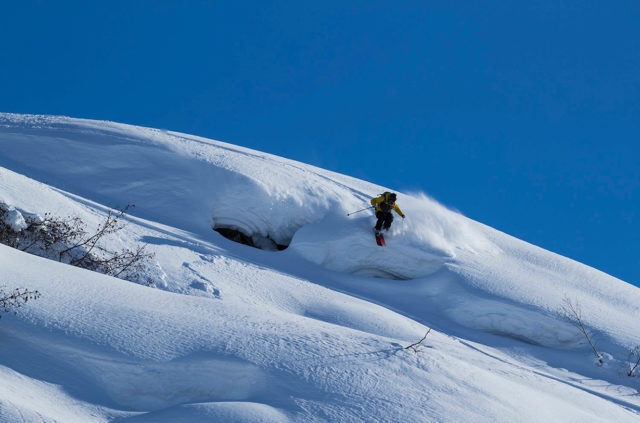
Lange claims that the heel / talocrural joint area of the RX's liner is heat moldable and I did get through the oestrus molding procedure. To me, the results of the molding process were underwhelming and did not significantly bear upon comfort or heel retention, merely it didn't make the fit worse, either. The toe expanse did experience a little tight initially, specially compared to my well-used Zipfits, but the RX 130's liners packed out fairly quickly and have remained comfortable and warm (definitely warmer than Zipfits).
Buckles
Lange says the RX's buckles are "Alu Race, WC Profil Screwed Shell 2 Easy Open up." That's a lot of words to describe what are substantially pretty standard alpine-kick buckles. They do live up to their proper name of being easy to open, even when wearing fairly beefy gloves. The buckles likewise have the micro-adjustability that is important on a loftier-performance, tight-plumbing fixtures boot like the RX 130 LV.
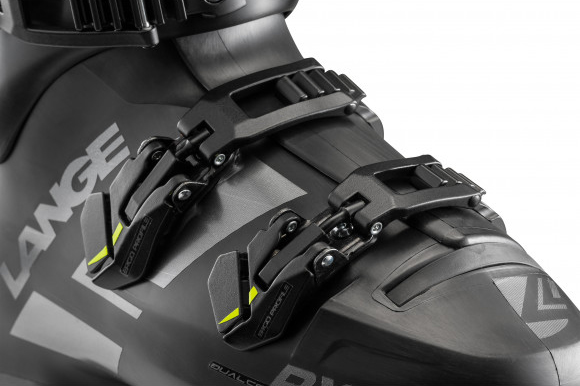
I've had no bug with the RX 130's buckles so far, even when taking lap later on lap with my instep buckle flopped open. The only buckles I've used that I prefer are the very absurd and easy to use "Spineflex" buckles on the Caput Raptor 140 RS, which practice seem to distribute pressure better than whatsoever other buckles I've used on a pair of alpine boots.
Power Strap
Lange uses a 50mm-broad, hook-and-loop power strap on the RX 130. While the stock strap works fairly well, information technology has the tendency to become a flake looser afterward a few runs, merely like I've constitute on all other similar hook-and-loop straps.
I do wish that Lange would equip their higher-operation boots with some sort of elastic Booster-style strap like another boot manufacturers are doing. I ended up replacing the RX 130'southward stock strap with a Earth Cup Booster later a few days (as I do on almost all of my frequently used boots), and I have no regrets later doing then.
Soles
I am thankful that Lange has thus far avoided putting Grip Walk soles on the RX and has instead just stuck with standard alpine ISO 5355 soles. As I've written many times, I personally don't remember that putting Grip Walk soles on alpine boots provides any notable advantage, fifty-fifty for scrambling around on rocks (though there might exist a small benefit on snowmachines). Just Grip Walk soles do have the distinct disadvantage of existence incompatible with many bindings, especially alpine bindings that predate the WTR / Grip Walk standards. I honey that I can click the RX into even my oldest alpine bindings without concern of compatibility issues.
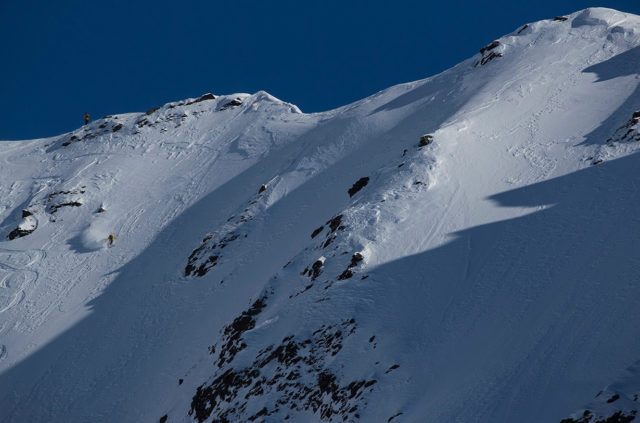
I'm am also grateful that Lange chose to provide some reasonably grippy, replaceable safety sole pads for the RX. While I don't similar the beefy and rockered Grip Walk soles, I'd still rather have some sort of grippy sole, rather than traditional difficult plastic. While I've spent several seasons heli guiding in hard-soled alpine boots, I love having rubber soles, especially for hard, slippery surfaces like ice and physical. With the RX 130'due south soles, I recall Lange struck the remainder perfectly for a kick of this blazon and I wish all high-performance inbounds boots offered similar soles.
It's worth noting that my other favorite tall boots, the Caput Raptor 140 RS, as well take Vibram rubberized sole blocks (though they were sold separately). While the Raptor's Vibram soles are an improvement over that boot'south stock hard plastic soles, the Lange rubber soles are much grippier on all surfaces and are easier to install / replace.
Getting Them On and Off
This is the beginning surface area where I recollect the Dual-Core construction does make a difference, especially when the boots are warm. In comparison to several pairs of non-Dual-Cadre Lange boots with essentially the same beat out, the electric current RX boots are a bit easier to become on and off. When it comes to getting the boot on and off, the RX 130 feels fairly similar to Tecnica boots with their "Quick Instep" construction (e.g., the Mach1 130 LV).
This is a pocket-sized signal, simply I also appreciate that all of the edges of the shell on the RX 130 have been rounded off / smoothed out. This is in stark contrast to the Head Raptor 140 RS, which has adequately sharp edges on the inside of the shell that have bloodied my hands more than once when trying to become them on and off or during liner removal / install.
Fit
As, always, choose your boots based on fit and piece of work with your local boot fitter to determine what boot you need. Getting a great-plumbing fixtures boot is much more than important than finding one with particular features / flex / weight. With that said, here's how the RX 130 LV works with my anxiety.
While I'm told that the RX had some small changes in the fit starting with the 17/18 version of the kick that I've been testing, every bit far as I tin can tell, the fit of the current RX 130 LV is the same as the 18/19 Lange XT Free 130 LV and XT Promodel LV. And based on my fourth dimension in these boots, I think this fit is the same as the previous, non-Dual-Core RX LV, and the 15/16 XT 130 LV. To verify this, I even swapped out the same liner in various generations of XT's and RX's and I could not tell the difference from one to another when it came to fit. For me, that's a very expert thing, as these boots all fit me almost perfectly correct out of the box without any shell modifications — and that'south pretty uncommon for me.
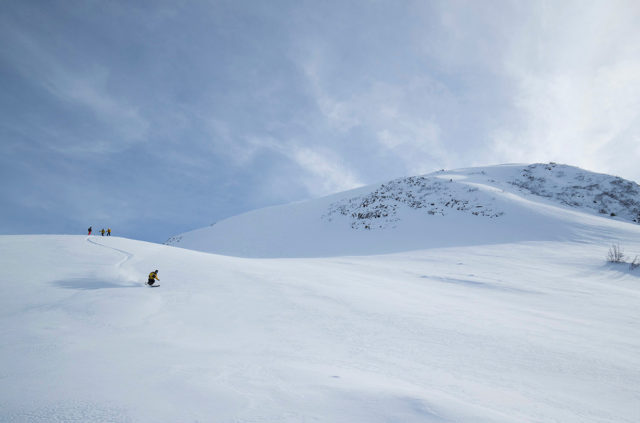
In fact, I can't think of any other alpine boot that I could comfortably ski out of the box without some shell modifications, except for the quondam (now discontinued) Salomon 10 Max 130. The X Max was a fairly loftier-volume boot for having a stated 98 mm last (not to be dislocated with the 18/xix Salomon South/Max, which is a very low-volume kick).
I haven't had a formal pes evaluation, but I've had a few boot fitters annotate on my human foot shape and the full general decision is that I have:
- A adequately low-volume ankle and heel
- A college than average instep / arch
- Good ankle flexion
- Moderate width across metatarsal heads
With that in heed, my common problems with ski-boot fit include too much room / sloppiness in the heel / ankle, the need for a "6th toe" and metatarsal-head dial, and most common of all, hurting / pressure level over my instep.
Aside from the various Lange boots mentioned in a higher place, the other electric current alpine boots in my rotation are the Head Raptor 140 RS, Dalbello Krypton 130 ID, and Salomon MTN Lab. All of these boots required big 6th-toe punches, whereas Lange boots did not. I'm not prepared to say that the forefoot of the "LV" Lange boots is overall wider or higher volume, simply it does seem to piece of work better for my particular foot.
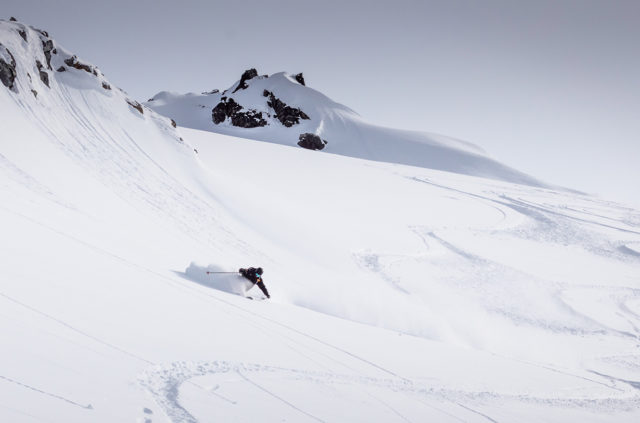
The place where I most appreciate the Lange RX 130 LV'south fit compared to whatever boot I've used recently is in the heel / ankle pocket, where I become the best heel retention that I've had in any recent boot. The only kick that comes close is the Head Raptor, which is also excellent but doesn't seem to contour to my particular foot quite equally well.
My simply issue with the Lange RX — which is an outcome for me in every alpine kicking and well-nigh AT boots I've owned — is the instep. In my first pair of the Lange XT LV, I did take the bootboard ground downwards slightly to accommodate for this and I've meant to do the same on the RX 130 LV. As with all my tall boots, I typically end upwardly with the lowest buckle and the cuff buckles fairly tight and the buckle over my instep barely latched if at all because my instep really can't handle any boosted pressure. I idea the softer plastic that is supposed to be higher up the instep in this new Dual Core RX 130 LV could make a deviation for me in this regard, but I have not noticed a difference compared to other recent "LV" Lange boots like the previous RX and XT Free.

Back in 2015 when I got my outset pair of the Lange XT 130 LV, Lange recommended that I go with the 97-mm-last LV version of the XT 130 instead of the 100mm-concluding MV (despite my concerns about my loftier arches / instep) because they felt that the heel and ankle would provide a snugger fit and college performance. I have tried on some "MV" Lange boots and will definitely exist sticking with the LV versions for all of the reasons Lange highlighted.
My last note on fit has to practice with liners. I accept used and generally similar the Lange RX 130 LV'southward liner, but I take Zipfit liners from Gnome's in New Zealand from the 15/sixteen XT 130 LV and I've swapped them into the electric current RX 130 LV. While everything I've said to a higher place applies with both liners, the Zipfits increase the heel / ankle memory to some other level and are generally my go-to liners for these boots.
Downhill Performance
The current, Dual Core RX 130 LV is the all-time alpine boot I've always used when information technology comes to downhill performance. I've skied a lot of boots and then I know that'south a bold statement and is partly (largely?) based on simply how well they fit my foot, only I experience that the flex of these boots is admittedly dialed for the kind of skiing that I practise.

My offset days in the RX 130 were around Apr 2017 on ~105 mm skis on a day with temps in the low 30's (Fahrenheit), skiing around Alyeska resort. I immediately noticed the excellent heel retention (remember, I accept skinny ankles / heels, then this is often an outcome for me). But I also noticed dandy responsiveness and rebound during dynamic plow transitions while skiing fast on groomers. The adjacent run I pointed my skis toward some skied-out, off-piste grime and felt that the RX 130 provided equally good or better suspension than any boot I've always used. Great kickoff impression!
Over the rest of that flavour and all of final yr, the Dual Core RX 130 has get my go-to boot for everything I do that doesn't involve ski touring. When reviewing other boots, I ski them enough to interruption in the liners and get an thought of how they perform, but I ever terminate up returning to the RX 130 for general skiing and apply it as my criterion kicking when reviewing skis. Similarly, I spent the majority of my heli flavor final yr guiding in the RX 130 and almost always grabbed them when I knew I'd be skiing something consequential.
I'grand not certain if the Dual Core structure is really "the virtually pregnant breakthrough in modern ski boot performance since the first plastic ski boot" as Lange claims on their website, simply the Dual Core RX 130 does provide the nicest flex, dampness, and rebound of any kicking I've used in recent memory.
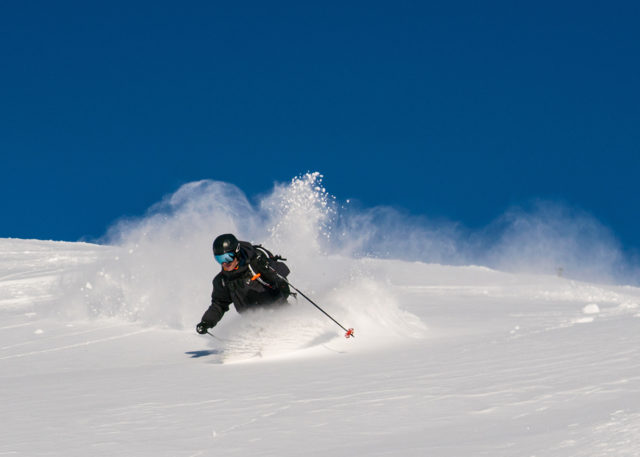
Unfortunately, information technology's been too long since I skied the non-Dual-Cadre RX 130 LV to definitively state a deviation. But I can say that, to me, the current RX 130 has a smoother flex than my other favorite boot, the Head Raptor 140 RS. The ii boots are fairly close, but the Raptor's flex ramps upwards slightly quicker and seems to provide a touch less rebound and allows for a trivial bit less talocrural joint flexion when really driving the kicking.
From a pure forward flex / stiffness standpoint, the RX 130 probably falls somewhere in the heart of the pack of "130-flex," high-performance alpine boots. I haven't skied a lot of the of the newest iterations of other 130 boots, just the RX 130 is slightly softer than the Raptor 140 (in 130-,140-, and 150-flex configurations) and the 17/18 (all black) Salomon X-Max 130. The RX 130 is stiffer than the old Nordica GPX 130 in every way.
Compared to Lange's eighteen/19 XT Costless 130 LV and XT Gratis Promodel LV (claimed flex of 140), the RX skis better in pretty much every way. I immediately noticed better rearward support (though the XT Free Promodel is shut), but the forwards flex on the RX is much smoother and more than progressive than the more linear flex of the Grilamid-based XT Free boots. I have gone as far as to ski with one foot in an XT Free, and the other foot in an RX 130 to become a meliorate thought of how they compare. While all of these boots are very good, I prefer the rebound and super smooth, progressive flex of the RX.
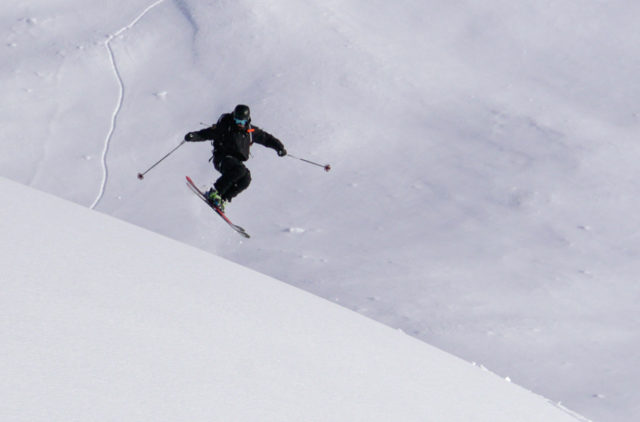
My simply quip with the current RX 130 is that I sometimes wish that Lange offered a stiffer version of the boot. I'chiliad 6', 190 lbs and am a pretty aggressive skier who skis on a variety of skis, from World Loving cup Slalom skis to >130 mm powder boards. The RX 130 is definitely stiff enough for me while skiing fast inbounds without a pack. But based on many days of heli guiding in them with a large pack, I do call back that those of us who accept to ski with big packs or potent skiers who are bigger than I am would benefit from a "140+" version of the RX.
Especially during warmer temps final season, I would occasionally swap out the RX 130 for the Head Raptor 140 RS (in 140- or 150-flex configuration) and establish the Raptors to exist a chip stronger and more supportive overall. And then, I wish I could get everything I love about my RX'south in a stronger flex.
Bottom Line
The current Lange RX 130 LV has class-leading flex characteristics and is an excellent choice for stiff all-mountain skiers. If you already accept a great-fitting, groovy performing pair of "130-flex" polyether boots (e.chiliad., the sometime RX 130), the improvement from the new RX'due south Dual Cadre construction is probably non dramatic plenty to go rid of them and showtime over. But if you need new boots and the RX 130 is a good fit, it's hard for me to imagine a amend all-round tall ski boot.

Source: https://blisterreview.com/gear-reviews/2019-2020-lange-rx-130-lv
0 Response to "Lange Rx 130 120 Ski Boots 2015 Review"
Post a Comment